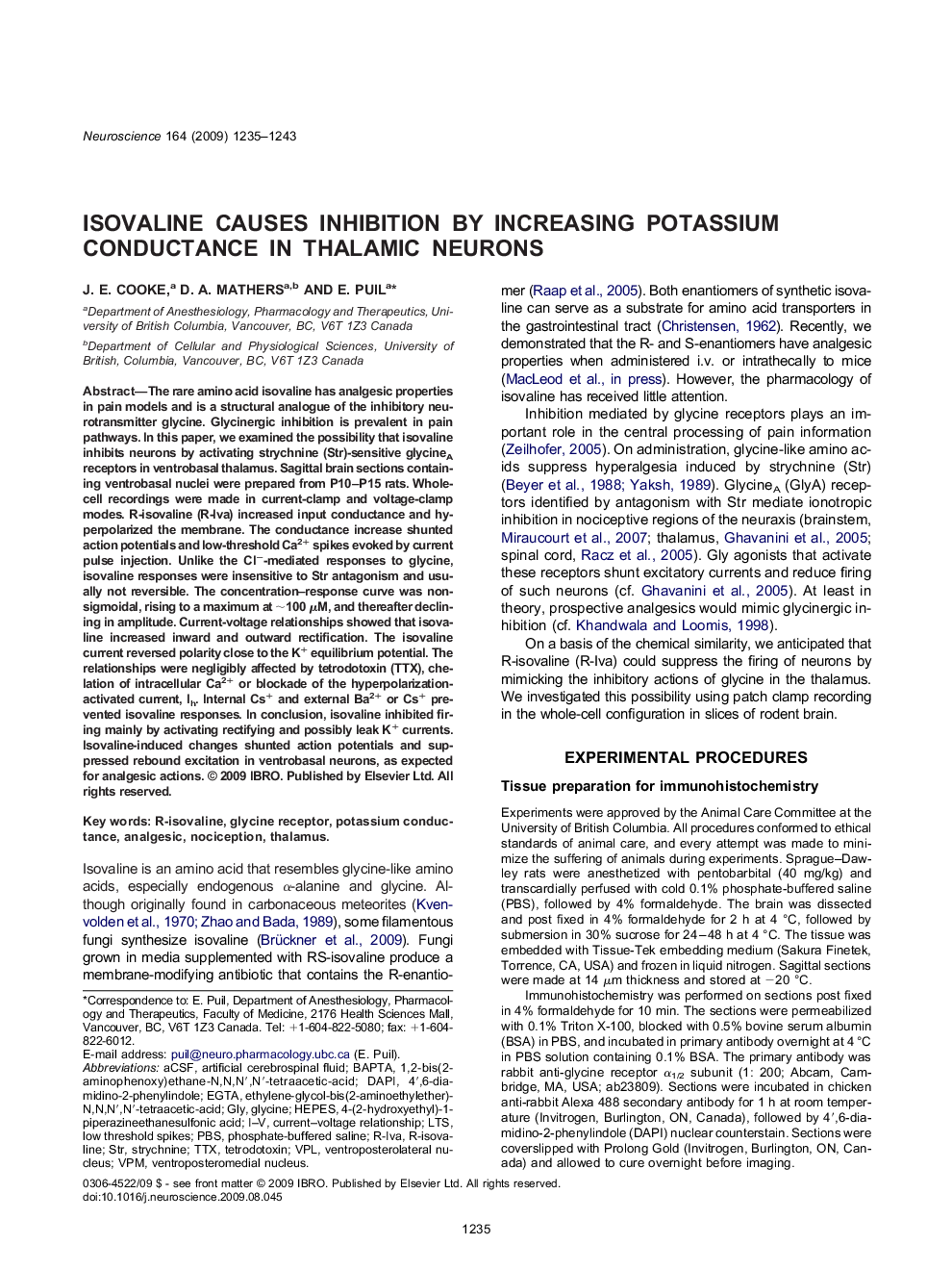| Article ID | Journal | Published Year | Pages | File Type |
|---|---|---|---|---|
| 6277513 | Neuroscience | 2009 | 9 Pages |
The rare amino acid isovaline has analgesic properties in pain models and is a structural analogue of the inhibitory neurotransmitter glycine. Glycinergic inhibition is prevalent in pain pathways. In this paper, we examined the possibility that isovaline inhibits neurons by activating strychnine (Str)-sensitive glycineA receptors in ventrobasal thalamus. Sagittal brain sections containing ventrobasal nuclei were prepared from P10-P15 rats. Whole-cell recordings were made in current-clamp and voltage-clamp modes. R-isovaline (R-Iva) increased input conductance and hyperpolarized the membrane. The conductance increase shunted action potentials and low-threshold Ca2+ spikes evoked by current pulse injection. Unlike the Clâ-mediated responses to glycine, isovaline responses were insensitive to Str antagonism and usually not reversible. The concentration-response curve was non-sigmoidal, rising to a maximum at â¼100 μM, and thereafter declining in amplitude. Current-voltage relationships showed that isovaline increased inward and outward rectification. The isovaline current reversed polarity close to the K+ equilibrium potential. The relationships were negligibly affected by tetrodotoxin (TTX), chelation of intracellular Ca2+ or blockade of the hyperpolarization-activated current, Ih. Internal Cs+ and external Ba2+ or Cs+ prevented isovaline responses. In conclusion, isovaline inhibited firing mainly by activating rectifying and possibly leak K+ currents. Isovaline-induced changes shunted action potentials and suppressed rebound excitation in ventrobasal neurons, as expected for analgesic actions.
